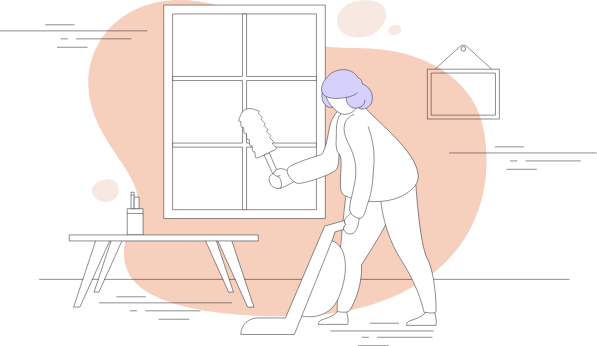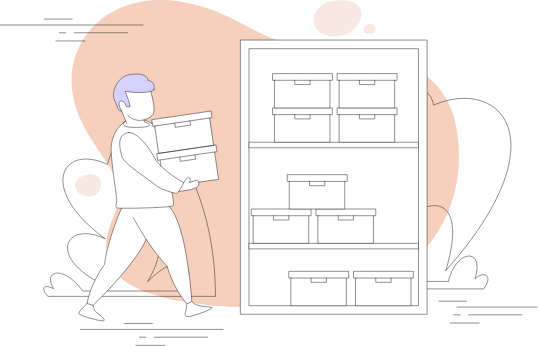
The key to any moving checklist, apartment or otherwise? Organization.
The less mess, the easier the move. The first place to start is by consolidating, selling, donating, returning, and minimizing everything you’ll be taking with you. It’s time to tidy up to prepare for the long journey ahead.
Before you start boxing up your current home, take the time to decide what to bring with you. While there’s always the option to store excess items in a storage space, it might be easier to part with items you no longer need.
Top ways to declutter before moving include:
Once you’ve decluttered, you might find the entire process of packing less stressful. Plus, it can be incredibly refreshing to have a clean slate when you move. After all, there’s no need to feel weighed down with stuff when you’re making a life-changing journey.

One of the most important things on your apartment checklist should be a budget. Moving can wipe out your savings if you try to solve problems on the spot instead of planning ahead. Take advantage of any freebies you can, and don’t be afraid to ask your friends and family members for help with some of the lighter work.
Of course, you can always hire a professional mover, but the costs may offset the benefits. Before making any decisions, assess your finances to determine the best situation for you.
Here are the key steps to reducing moving expenses and creating a moving budget:

With organizing and budgeting done, the next step on your apartment move checklist is packing.
You can begin packing up to a month before your move-out day—just be strategic about what you’re boxing up. The more organized you are, the easier it will be to unpack in your new apartment.
Consider these tips for making the packing process simple and efficient:

You might wait to begin a full scrub down of your old apartment, but it might be more efficient to clean as you go. As you pack up each room, take the time to clean it thoroughly or, at the very least, try to section off clean areas from less clean.
Throughout the packing process, make note of anything that’s damaged, and either repair it or let your landlord know. The best way to get your deposit back is to be open and honest, and ask how you can help.
Before you turn in your keys and wait for your deposit, consider these cleanup procedures:
Once you’ve accessed your old home, you should be nearly ready to move into your new home. Be sure to check hard to reach areas for dirt, dust, and debris, and consider asking a friend to come with you for a second inspection. A fresh set of eyes could help spot anything you’ve missed.

Block off as much time as possible to keep stress low during the moving process. Consider the layout of your new place when you’re loading your truck—the first things you want to carry in should be the last things you put on the truck.
With everything packed, sorted, and cleaned, the moving process should go smoothly. If you’re looking for some last-minute tips, consider the following:

Congratulations—you’ve finally made it into your new home!
Now on to checking off the getting settled part of the relocation guide. Whether you’re breaking out the champagne or laying down for a well-deserved nap, there are a few more things to consider before you can call it quits. Of course, you’re free to take as long as you’d like to settle in, you might enjoy checking off these final steps so you finally call your new apartment “home.”
Settling in can be easy and fun with these simple to-dos:
Check, check, and check! You’ve hit the end of the list and you should be more than ready to box up, clean up, and haul out. We hope this apartment checklist and moving guide is helpful because relocation can be challenging. That said, if you’re looking for an even simpler way to move, we’ve got that covered too. At Common, your coliving apartment comes fully furnished, and our keyless entry makes move-in the moving process possible in under an hour.
Our beautiful furnished apartments offer city living at unbelievable prices, all in the neighborhoods you want to live in. Once you’re all settled, meeting your neighbors is as simple as downloading our app to your smartphone. You can connect with neighbors, learn more about your city, and host a meet-and-greet in any of our warm community spaces. Learn more about how Common makes city living easier.